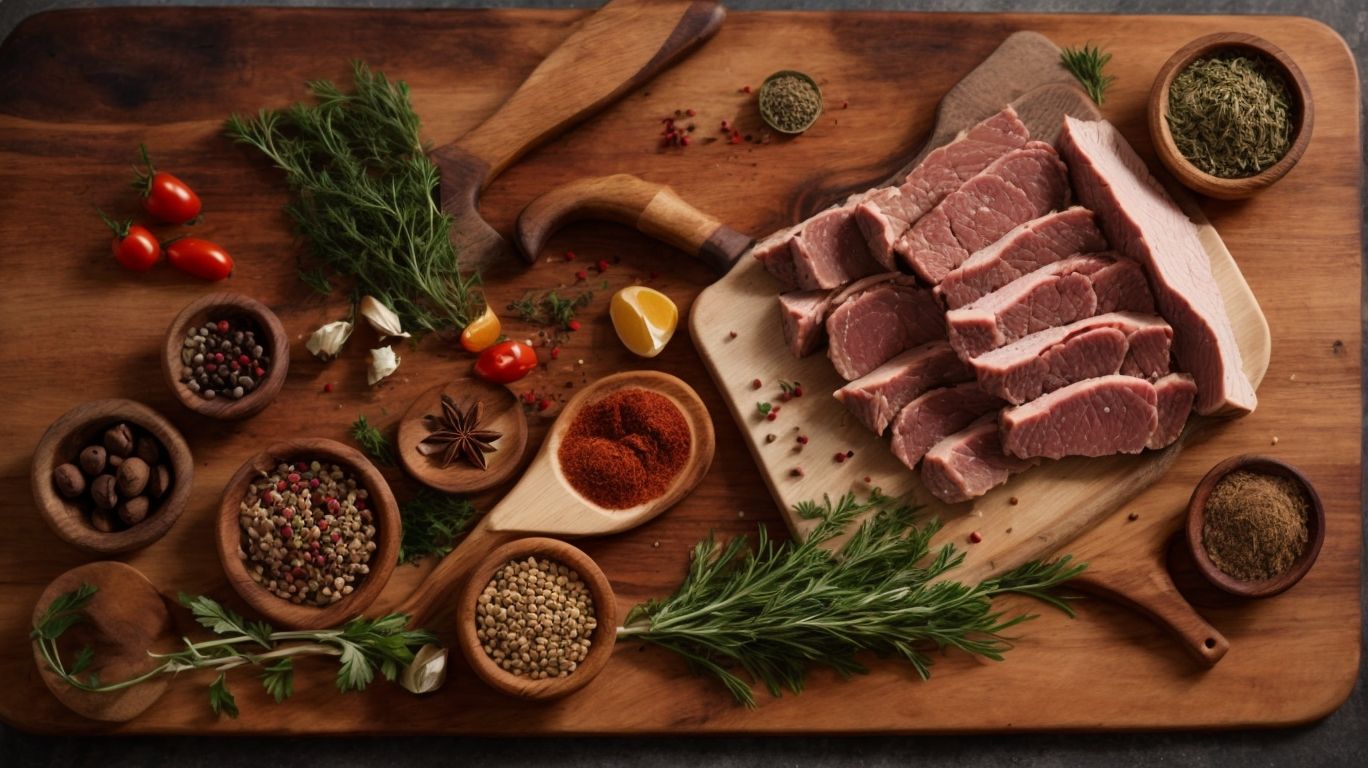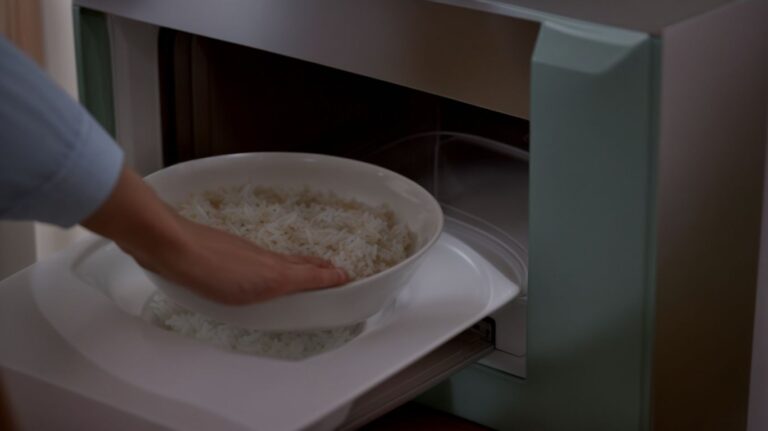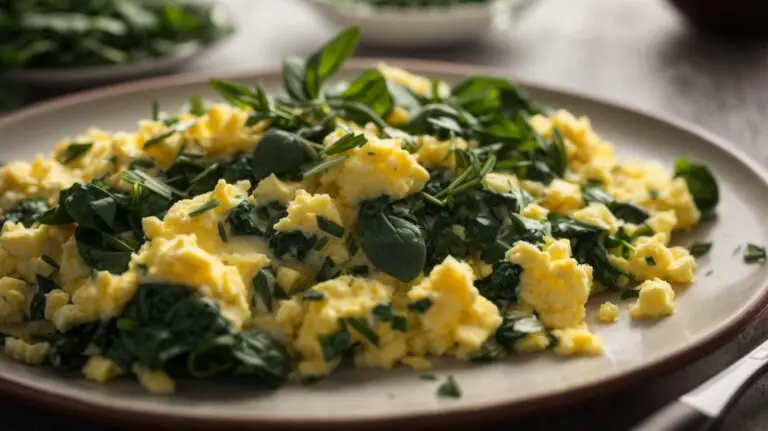How to Cook Lamb?
If you’re looking to elevate your cooking game and impress your dinner guests, consider lamb as your protein of choice.
In this article, we’ll explore the different cuts of lamb, how to prepare it for cooking, various marinating methods, and the best ways to cook lamb to perfection.
From grilling to slow cooking, we’ll cover all the techniques you need to know. Plus, we’ll share some tips for perfectly cooked lamb and suggestions for serving it with delicious side dishes and wine pairings.
Get ready to take your culinary skills to the next level with our comprehensive guide to cooking lamb.
Key Takeaways:
Why Choose Lamb as a Protein?
Lamb is a versatile and flavorful protein choice that offers a wide range of culinary possibilities.
One of the key benefits of cooking with lamb is its rich and distinctive taste that adds depth to a variety of dishes. Whether it’s used in hearty stews, succulent roasts, or fragrant curries, lamb imparts a unique flavor that enhances the overall dish.
The versatility of lamb allows it to be prepared using different cooking methods such as grilling, braising, or slow cooking, making it suitable for various recipes from around the world. Its ability to pair well with a wide range of seasonings and spices further expands the culinary possibilities when working with this protein.
What are the Different Cuts of Lamb?
The different cuts of lamb include lamb chops, leg of lamb, rack of lamb, and lamb shoulder, each offering unique flavors and textures.
Lamb chops are cut from the ribs, loin, or shoulder and are known for their tender and juicy meat. They are great for quick cooking methods like grilling or pan-searing. The natural marbling in lamb chops adds richness and flavor.
Leg of lamb, a classic roast, is characterized by its lean and flavorful meat. Slow roasting or braising is ideal for this cut to enhance its tenderness. It is often seasoned with herbs and spices for added depth.
Rack of lamb consists of the rib bones and a layer of tender meat. This cut is prized for its delicate flavor and tenderness, making it perfect for elegant meals. Roasting or grilling the rack of lamb brings out its succulent taste.
Lamb shoulder, a well-marbled cut, offers a rich and robust flavor profile. Slow cooking methods like braising or stewing are recommended to achieve meltingly tender meat. The shoulder is versatile and works well in stews, curries, and roasts.
Preparing Lamb for Cooking
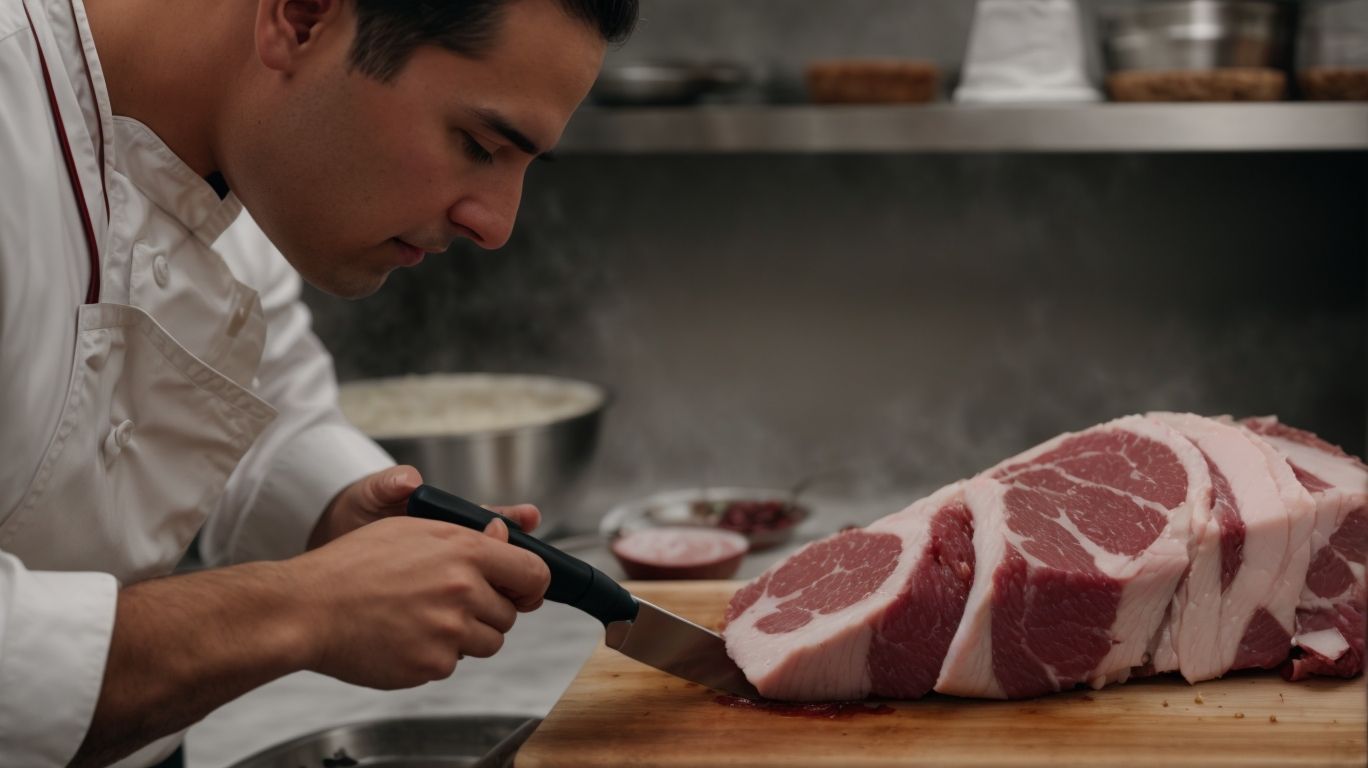
Credits: Poormet.Com – Joshua Moore
Preparing lamb for cooking involves marinating the meat with fresh herbs, garlic, and olive oil to enhance its natural flavors.
Marinating the lamb is a crucial step that allows the meat to absorb the flavors and tenderize, creating a more succulent dish. To begin, combine finely minced garlic, a generous amount of olive oil, and a mix of herbs like rosemary, thyme, and oregano in a bowl. Coat the lamb evenly with this mixture, ensuring each piece gets a good amount of seasoning.
After marination, it’s essential to season the lamb with salt and pepper to further enhance its taste. In terms of slicing the meat, it’s advisable to cut against the grain for a more tender texture. Slicing the lamb thinly also helps in even cooking and presentation, offering a delightful eating experience.
How to Select Fresh Lamb?
Selecting fresh lamb involves checking for firmness, a pleasant smell, and minimal moisture, ensuring quality and taste.
When assessing lamb meat, remember that a quality cut should have a fine texture with a good level of marbling to enhance flavor and juiciness. The aroma of fresh lamb should be mild, slightly sweet, and free from any off-putting scents, indicating a well-preserved piece.
Another crucial tip is to look for meat that is light red or pinkish in color, a sign of its youth and tenderness. Before cooking, season the lamb generously with salt, freshly ground black pepper, and aromatic herbs like rosemary to elevate its natural taste.
What are the Different Ways to Marinate Lamb?
Marinating lamb can be done in various ways, such as using a blend of herbs, butter, shallots, and citrus like lemon juice for a flavorful result.
One popular method is to create a savory herb-infused marinade by combining minced thyme with garlic, olive oil, and a hint of butter. This blend imparts a rich flavor profile to the lamb as it tenderizes during the marination process.
Another exquisite option is to prepare a butter-based marinade featuring melted butter mixed with freshly squeezed lemon juice and minced shallots. This luxurious blend adds a velvety texture and zesty undertones to the lamb, ideal for roasting to perfection.
How to Cook Lamb?
Cooking lamb can be a delightful experience, whether roasted in the oven, pan-seared, or slow-cooked to perfection.
Roasting a lamb leg in the oven is a traditional method that yields a tender and flavorful result. Depending on the weight of the meat, plan for about 20 minutes per pound in a preheated oven. For a quicker option, pan-searing lamb chops or cutlets is a great way to achieve a caramelized crust and juicy interior.
- Slow cooking lamb in a crockpot or slow cooker is ideal for busy days, as it allows the meat to tenderize over several hours, infusing it with herbs and spices.
- Each of these top 5 methods offers a unique way to enjoy the rich taste of lamb, providing versatility in cooking techniques and flavors.
Grilling
Grilling lamb offers a smoky char and succulent texture, with dishes like spicy sticky lamb showcasing bold flavors.
To achieve that perfect spicy sticky lamb dish, marinating the lamb is key. A flavorful mixture of spices, herbs, garlic, and olive oil rubbed onto the meat not only enhances the taste but also helps tenderize it. Let the lamb sit in the marinade for at least a couple of hours, or ideally overnight, to allow the flavors to penetrate the meat deeply.
In terms of grilling, preheat your grill to a medium-high temperature and ensure it is well-oiled to prevent sticking. For a juicy and charred exterior, sear the lamb quickly on all sides before reducing the heat to cook it through slowly. This method helps retain both moisture and those sought-after grill marks.
Roasting
Roasting lamb in the oven with garlic, olive oil, and aromatic herbs like rosemary creates a tender and flavorful dish.
When preparing to roast lamb, it’s essential to consider the cooking time to ensure the meat is cooked to perfection. Generally, a rule of thumb is to roast lamb at about 20 minutes per pound at 375°F for medium rare. For a medium to well-done finish, you may want to increase the cooking time to around 25-30 minutes per pound. Seasoning the lamb generously with salt, pepper, and garlic powder before drizzling it with olive oil enhances its natural flavors.
Using a roasting rack allows for even air circulation around the meat, promoting a crispy exterior. Basting the lamb occasionally with a mixture of melted butter, fresh herbs, and minced garlic not only adds moisture but also infuses it with extra layers of flavor. Tenting the lamb with foil during the initial cooking phase helps retain moisture, ensuring a juicy end result.
Braising
Braising lamb involves slow-cooking in a flavorful liquid with potatoes, onions, and a hint of paprika for a comforting and hearty meal.
In terms of choosing the ideal liquid for braising lamb, options abound. Whether it be broth, wine, or even water, the key is to select a liquid that complements the richness of the meat. Adding vegetables like carrots, celery, or bell peppers can enhance the overall flavor profile. As for seasoning, a mix of garlic, rosemary, thyme, and a touch of paprika can create a savory and aromatic blend that infuses the meat with delectable flavors.
Pan-searing
Pan-searing lamb allows for a caramelized crust and juicy interior, perfect for cuts like lamb leg with fresh herbs to make a delicious meal.
When pan-searing lamb, it’s crucial to start with a hot skillet to promote a quick sear and lock in juices. To achieve a golden brown exterior, ensure the lamb is patted dry with paper towels and seasoned generously with salt and pepper. Once the pan is hot, add a drizzle of olive oil and sear the lamb on all sides until a beautiful crust forms. This high-heat method is ideal for caramelization while keeping the interior tender and succulent.
Slow Cooking
Slow cooking lamb yields melt-in-your-mouth tenderness, with dishes like roasted lamb shoulder showcasing rich flavors and aromas.
When cooking lamb slowly, the meat is allowed to tenderize over a longer period, resulting in a succulent texture that simply melts in your mouth. With the desired internal temperature achieved at around 145°F, lamb typically takes about 25-30 minutes per pound when slow-cooked. This extended cooking time allows the fats to render down, infusing the meat with unparalleled juiciness and depth of flavor.
Tips for Perfectly Cooked Lamb
Achieving perfectly cooked lamb requires using a meat thermometer, allowing the lamb to rest before serving, and avoiding overcooking for optimal flavor and texture.
To start with, when cooking lamb, it is crucial to ensure that the internal temperature reaches the desired doneness. A meat thermometer is an invaluable tool in this process, enabling you to monitor the temperature accurately throughout cooking. Whether you prefer your lamb rare, medium-rare, or well-done, a meat thermometer will help you achieve consistent results every time.
After cooking, it is essential to let the lamb rest before carving and serving. This resting period allows the juices to redistribute within the lamb, ensuring a moist and flavorful end result. Typically, a lamb roast should rest for around 10-20 minutes, depending on its size, before slicing into it.
One of the most common pitfalls when cooking lamb is overcooking, which can result in dry and tough meat. To prevent this, it is essential to follow recommended cooking times and temperatures, adjusting them as needed based on your oven and the specific cut of lamb. By keeping a close eye on the temperature and avoiding overcooking, you’ll be on your way to serving perfectly cooked lamb that delights your taste buds.
Use a Meat Thermometer
Using a meat thermometer ensures that your lamb is cooked to the desired level of doneness, enhancing the overall dining experience.
When cooking lamb, achieving the perfect doneness is crucial to preserving the natural flavors and tenderness of the meat. A meat thermometer is a valuable tool in this process, providing precise temperature readings to ensure that your lamb is neither undercooked nor overcooked. By accurately monitoring the internal temperature, you can avoid the risk of serving undercooked meat, which can be unsafe to consume. Overcooking lamb can result in dry and tough meat, diminishing the quality of your dish.
Let the Lamb Rest Before Serving
Allowing lamb to rest after cooking enables the juices to redistribute evenly, ensuring a moist and flavorful dish with each slice.
During this resting period, the meat continues to cook slightly, reaching its optimal level of doneness. The flavors have time to meld together, enhancing the natural richness of the lamb. The texture of the meat becomes more tender as the proteins relax.
When it’s time to carve the lamb, be sure to use a sharp knife and slice against the grain to maximize tenderness. Each slice should showcase the beautifully rendered marbling and succulence of the meat.
Don’t Overcook the Lamb
Avoiding overcooking lamb is essential to preserve its natural juiciness and flavors, ensuring a delightful dining experience with each roast.
When cooking lamb, it’s crucial to note the minutes per pound guideline to achieve the perfect doneness. For a tender and juicy result, aim for around 15-20 minutes per pound when roasting at 375°F. Overcooking can lead to dry and tough meat, taking away from the rich taste that lamb offers. To enhance the flavor, consider marinating the lamb before cooking with a mix of olive oil, garlic, fresh herbs, and a touch of lemon juice. This adds depth and richness to the meat while helping to retain moisture during cooking.
Serving Suggestions for Lamb
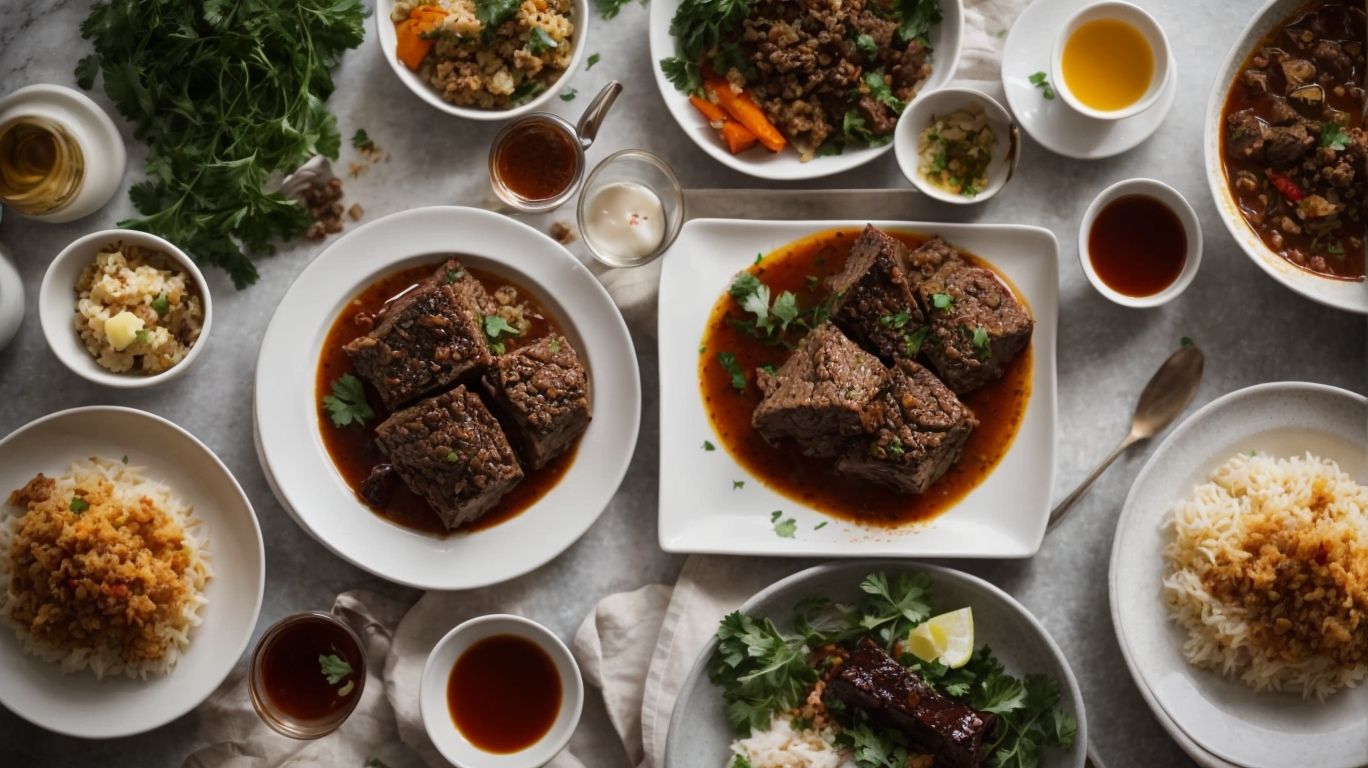
Credits: Poormet.Com – Gregory Clark
Serving lamb offers a myriad of possibilities, from simple seasoning to elaborate recipes that showcase the best qualities of cuts like lamb shoulder.
For those looking to keep it simple, a classic seasoning of salt, pepper, and fresh herbs can bring out the natural flavors of the lamb.
Lamb shoulder lends itself well to slow cooking methods, such as braising or roasting, resulting in tender and flavorful meat. To elevate the dining experience, consider serving lamb with a side of creamy mashed potatoes and roasted root vegetables. Another popular option is to marinate the lamb in a mixture of garlic, lemon, and olive oil before grilling it to perfection.
Pairing with Different Side Dishes
Pairing lamb with complementary side dishes, such as roasted vegetables, pan-seared potatoes, or onion-based accompaniments, enhances the overall dining experience.
When considering the flavors of lamb, it’s important to think about the cooking methods and ingredients used in the side dishes. For instance, the savory richness of a perfectly roasted lamb pairs beautifully with the sweetness of caramelized onions or the earthy tones of pan-fried mushrooms.
Alternatively, the juiciness of grilled lamb chops can be complemented by a light and refreshing watercress salad, providing a delightful contrast in textures and tastes.
Recommended Wine Pairings
Selecting the right wine to pair with lamb involves considering factors like saltiness, pepperiness, and the cooking method, ensuring a harmonious dining experience.
In terms of the flavor profile of lamb dishes, the richness of the meat needs a wine that can complement its savory essence. Opting for a bold red wine with robust tannins such as Cabernet Sauvignon or Syrah can stand up to the hearty flavors of lamb. For lamb dishes seasoned with spices like rosemary and thyme, consider a wine with herbal notes like a Merlot or Sangiovese to elevate the flavors.
Monitoring the cooking level of your lamb is crucial for wine pairing. A medium-rare lamb cooked to an internal temperature of 145°F will be best accompanied by a medium-bodied red wine to maintain the delicate texture and juices of the meat. Experimenting with different wine options while adjusting salt levels can lead to discovering the perfect balance between the lamb’s seasoning and the wine’s complexity. Remember to have a meat thermometer handy to ensure the lamb reaches the desired doneness without overcooking it. A glass of water between sips of wine can help cleanse the palate and enhance the overall dining experience.
Conclusion and Final Thoughts
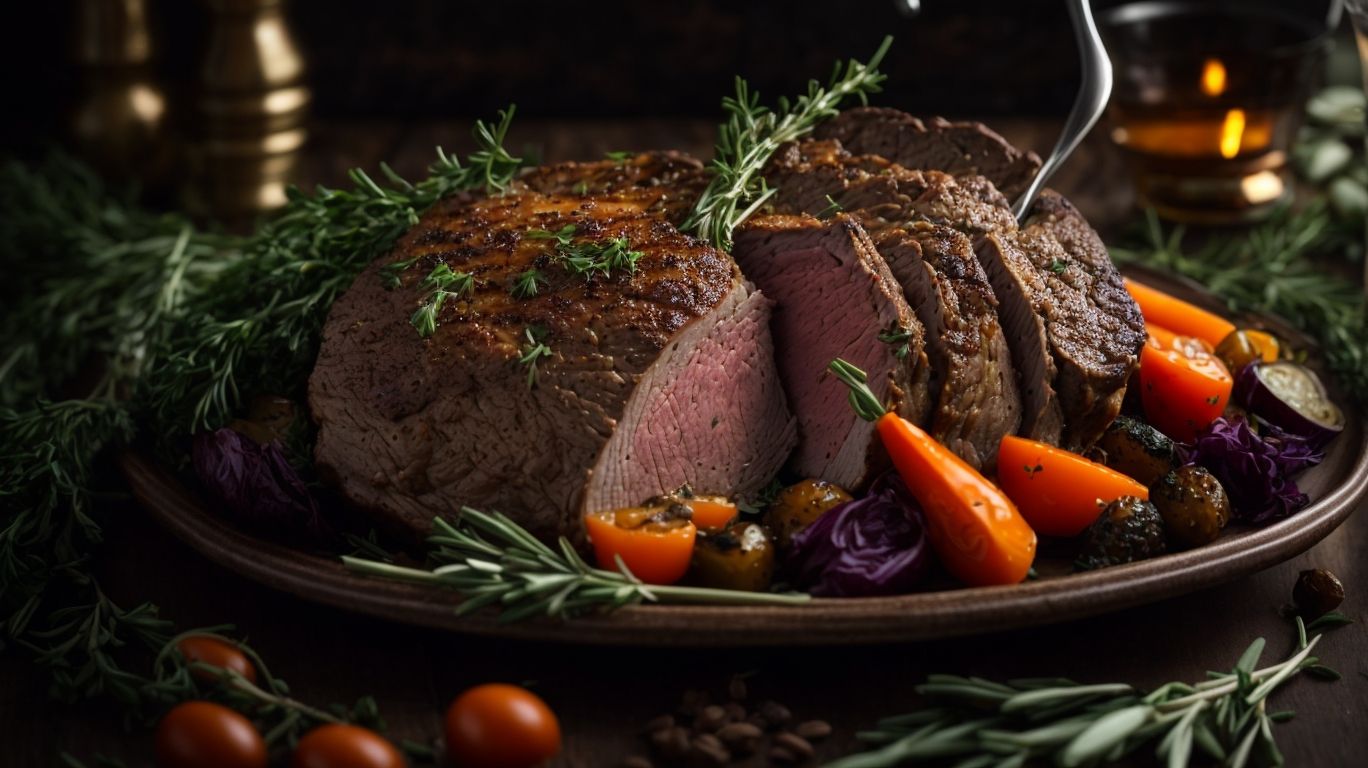
Credits: Poormet.Com – Nicholas Hernandez
The journey of cooking lamb is a delightful one, where flavors like garlic, olive oil, aromatic thyme, and creamy butter come together to create culinary magic.
When preparing lamb, the garlic adds a bold and earthy flavor profile, while the olive oil brings a luscious richness. The aromatic thyme complements the meat with its herbaceous notes, enhancing the overall taste. The creamy butter adds a luxurious touch, further enhancing the texture and taste of the dish. These key ingredients work harmoniously to elevate the dining experience to a whole new level.
Frequently Asked Questions
How to Cook Lamb?
Ans: Cooking lamb can be intimidating, but with a few simple tips and techniques, you can create a delicious and impressive meal. Here are some frequently asked questions about cooking lamb.
What is the best way to cook lamb?
Ans: There are several ways to cook lamb, such as roasting, grilling, braising, and stewing. It ultimately depends on the cut of lamb you have and the type of dish you want to make. For example, a rack of lamb is best roasted, while a tougher cut like shank or leg is better suited for braising.
How can I tell when lamb is cooked?
Ans: The key to perfectly cooked lamb is knowing when it’s done. Use a meat thermometer to check the internal temperature. For medium-rare lamb, the thermometer should read 135°F, medium is 145°F, and well-done is 160°F.
Is it necessary to marinate lamb before cooking?
Ans: Marinating lamb is not necessary, but it can add additional flavor and tenderness to the meat. If using a marinade, make sure to let the lamb marinate for at least 30 minutes, but no more than 2 hours.
How do I prevent the lamb from drying out?
Ans: To prevent lamb from drying out, avoid overcooking it. Lamb is best served medium-rare to medium. If you’re using a lean cut of lamb, such as leg or loin, basting it with a marinade or sauce can also help keep the meat moist.
Can I cook lamb in advance?
Ans: Yes, you can cook lamb in advance. If you’re making a large roast, such as a leg of lamb, it’s best to let it rest for at least 15 minutes before slicing and serving. This allows the juices to redistribute and keeps the meat tender and juicy. You can also store cooked lamb in the fridge for up to three days or freeze it for later use.

